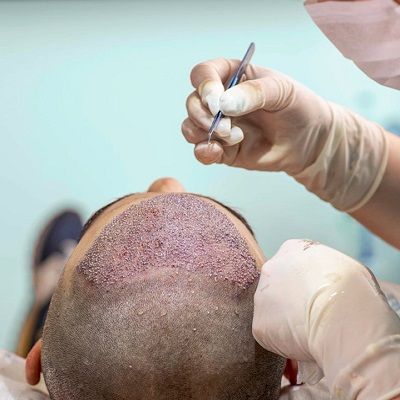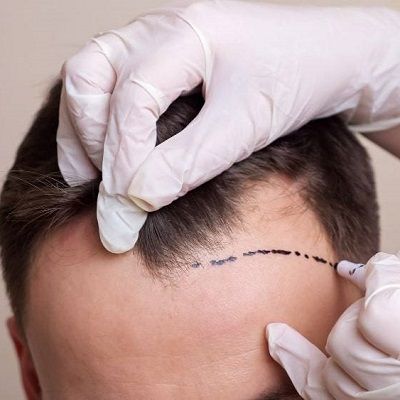Introduction
Hair loss is a common issue affecting millions of people worldwide, and it can significantly impact one’s self-esteem and quality of life. Hair transplant procedures provide a long-term solution for hair restoration by relocating hair follicles from one part of the body (the donor site) to another (the recipient site). This process can help individuals regain a fuller head of hair and improve their overall appearance. With various techniques available, understanding each procedure's specifics, benefits, and risks is essential for anyone considering a hair transplant.

Process
1. Consultation and Planning:
- Initial Evaluation: The process begins with a consultation with a hair transplant specialist. During this visit, the doctor assesses the patient's hair loss pattern, scalp condition, and overall health.
- Treatment Plan: Based on the evaluation, a personalized treatment plan is developed. This plan includes the choice of technique, number of grafts required, and expected outcomes.
2. Preparation:
- Pre-Operative Instructions: Patients are given specific instructions to follow before the procedure, such as avoiding certain medications and preparing the scalp.
- Local Anesthesia: On the day of the procedure, the scalp is cleaned, and local anesthesia is administered to numb the area where the hair follicles will be harvested and transplanted.
3. Harvesting:
- Follicular Unit Extraction (FUE): Individual hair follicles are extracted from the donor area using a tiny punch tool. This method is less invasive and leaves minimal scarring.
- Follicular Unit Transplantation (FUT): A strip of scalp with hair follicles is removed from the donor area. The follicles are then dissected into individual grafts. This technique can be more suitable for patients requiring a large number of grafts.
4. Graft Placement:
- Recipient Site Preparation: Tiny incisions are made in the recipient area where the grafts will be placed.
- Transplantation: The extracted hair follicles are carefully placed into these incisions. The placement pattern mimics natural hair growth to achieve a natural look.
5. Post-Operative Care:
- Recovery Instructions: After the procedure, patients receive detailed aftercare instructions, including how to care for the scalp, medications to manage pain and prevent infection, and follow-up appointments.
6. Results:
- Initial Healing: The transplanted area may appear red and swollen initially. Scabs may form and fall off in the weeks following the procedure.
- Hair Growth: New hair growth typically begins within a few months, with full results visible within 6 to 12 months.
Benefits
1. Natural-Looking Results:
- Hair transplants offer natural-looking results, as the transplanted hair blends seamlessly with existing hair.
2. Permanent Solution:
- The results of a hair transplant are permanent, as the transplanted follicles are typically resistant to the hormones that cause hair loss.
3. Minimal Downtime:
- Most patients can return to their normal activities within a few days, making hair transplants a convenient option for many.
4. Boosted Confidence:
- Successful hair transplants can significantly enhance self-esteem and confidence by improving appearance.
5. No Visible Scarring (FUE):
- FUE procedures leave minimal scarring, as tiny puncture wounds heal quickly and are less noticeable.
Characteristics
1. Personalized Treatment:
- Hair transplant procedures are tailored to each patient’s unique needs and hair loss pattern.
2. Advanced Techniques:
- Modern techniques like FUE and FUT offer different advantages, allowing for a customized approach based on the patient’s requirements.
3. Skilled Surgeons:
- The success of a hair transplant depends significantly on the skill and experience of the surgeon performing the procedure.
4. High Patient Satisfaction:
- Many patients report high levels of satisfaction with their results, especially when they follow post-operative care instructions and have realistic expectations.
Risks
1. Infection:
- As with any surgical procedure, there is a risk of infection. Proper post-operative care and adherence to hygiene instructions can help minimize this risk.
2. Scarring:
- While FUE generally results in minimal scarring, FUT may leave a linear scar on the donor site. This scar can be hidden with shorter hairstyles but may be noticeable with longer hair.
3. Unnatural Appearance:
- In some cases, if the transplanted hair is not placed correctly or if there is insufficient donor hair, the results may appear unnatural.
4. Hair Loss Progression:
- Hair loss can continue in non-transplanted areas, potentially leading to a patchy appearance if not managed appropriately.
5. Cost:
- Hair transplant procedures can be expensive, and multiple sessions may be required to achieve desired results, depending on the extent of hair loss.
Conclusion
Hair transplant procedures offer a viable solution for individuals struggling with hair loss, providing the potential for natural-looking, permanent results. With advancements in techniques like FUE and FUT, patients have more options than ever before to address their hair restoration needs. However, it is essential to understand the risks and benefits associated with these procedures, including potential complications and the need for realistic expectations. Consulting with a qualified hair transplant specialist and thoroughly researching the procedure can help ensure that individuals make informed decisions and achieve the best possible outcomes.
